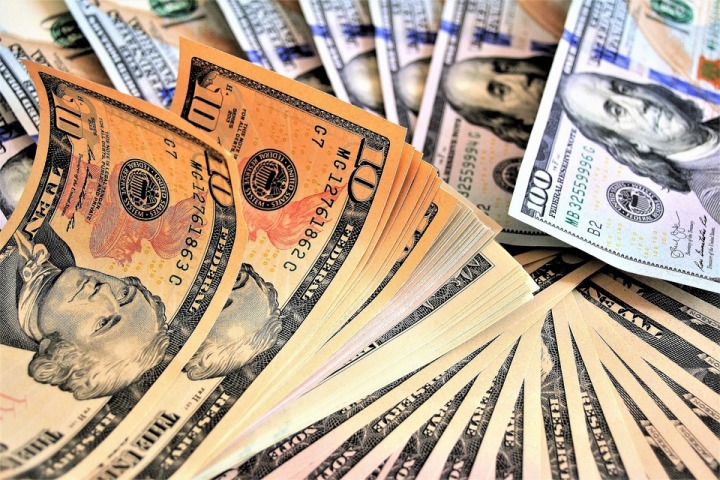Dovish Fed minutes, positive trade developments to likely keep risk rally going

Asian shares took a breather on Thursday after an extended rally, as markets awaited more news on U.S.-China trade talks that have raised hopes of a deal to avert an all-out trade war between the economic giants. MSCI's broadest index of Asia-Pacific shares outside Japan lost 0.2 percent, reversing course after briefly touching a near four-week high early in the session. Australian shares eased 0.3 percent, while Japan's Nikkei was down 1.4 percent by the midday break. Hong Kong's Hang Seng was off nearly half a percent, while China's blue-chip CSI 300 lost 0.1 percent. Wall Street's S&P 500 rose 0.41 percent on Wednesday, extending its gains from 20-month lows touched around Christmas to more than 10 percent.
Delegations from China and the United States ended three days of trade talks in Beijing on Wednesday in the first face-to-face negotiations since both sides agreed a 90-day truce in a trade war that has disrupted the flow of hundreds of billions of dollars of goods. China's commerce ministry said on Thursday that the talks with the United States this week were extensive, and helped establish a foundation for the resolution of each others' concerns. However, there were few concrete details on the meetings in Beijing, which were not at a ministerial level, so were not expected to produce a deal to end the trade war. Risk assets extended a days-long rally overnight after minutes from the Fed's December meeting showed that many policymakers were of the opinion they could be patient about future monetary tightening, and a few did not support the central bank's rate increase last month.
Not helping sentiment were figures out of China showing the country's consumer prices and factory-gate inflation both rose less than expected in December, with the latter rising at the slowest pace in over two years. "Dovish Fed minutes and positive developments out from the U.S.-China trade talks will likely keep the risk rally going although some market players may opt to book gains and to wait for fresh leads," ING economists said in a note to clients. Besides the dovish slant from the minutes, a clutch of Fed officials also said on Wednesday they will wait to deliver more interest rate hikes so the central bank can further assess growing risks to an otherwise solid U.S. economic outlook.
"The financial markets had been pushing the Federal Reserve to change their tune," said Chris Weston, Melbourne-based head of research at foreign exchange brokerage Pepperstone. "We've got that situation played out. The markets have had their day, they have pushed the Federal Reserve to work towards a sort of concerted patience stance. That has all happened. Now we've got back to an equilibrium point." The rally has gained traction since last Friday, when Federal Reserve Chairman Jerome Powell said he was aware of risks to the economy and would be patient and flexible in policy decisions this year. E-Mini futures for the S&P 500 were last down about half a percent. OIL
EASES, DOLLAR PRESSURED
Oil also caught investors' attention after U.S. crude and Brent jumped overnight, helped by optimism over easing Sino-U.S. trade tensions, while OPEC-led crude output cuts also provided support. U.S. West Texas Intermediate crude futures on Wednesday gained almost 5.2 percent, while Brent crude futures were up more than 4.6 percent. The sharp gains extended a rally that has pushed futures up about 14 percent this year. Both crude futures gave up some of their recent gains on Thursday.
U.S. crude was last trading 55 cents lower at $51.81 a barrel, down 1.05 percent. Brent lost 50 cents to $60.94, off 0.81 percent. Pepperstone's Weston said he viewed more gains in oil prices as a key driver for any further rise in risk appetite. If U.S. crude futures can break through the $55 level, "you're going to see real yields probably lower. That's really good for the cost of money and taking some further headwinds out of the U.S. dollar," he said. U.S. Treasury yields last stood at 2.696 percent, down from 2.710 percent at the U.S. close on Wednesday.
The dollar remained on the defensive after hitting its lowest level since mid-October amid the signs Fed policymakers are becoming more cautious about future rate hikes and as investors unwound safe-haven bets due to optimism over the trade talks. The greenback was down a tenth of a percent against the euro at $1.1553. The single currency gained 0.9 percent against the dollar during the previous session, its biggest one-day gain since late June. Against a basket of six major rivals, the dollar briefly dipped to 95.082, its lowest since Oct. 17, and was last down 0.1 percent. The dollar lost nearly 0.2 percent against the yen, a safe-haven currency that's often preferred by traders during times of market and economic stress.
The Canadian dollar retreated in line with oil prices, and last traded down 0.2 percent at C$1.3237. It had risen to a five-week high during the previous session. The Bank of Canada held interest rates steady as expected on Wednesday but said more increases would be necessary even though low oil prices and a weak housing market will harm the economy in the short term. In commodity markets, spot gold was 0.2 percent higher at $1,295.40, trading not far off a near seven-month peak of $1.298,60 scaled on Friday.
(With inputs from agencies.)
ALSO READ
US Treasury Secretary Yellen meets foreign business leaders in China ahead of trade talks
Navi Mumbai police book five persons for duping Iranian date trader of Rs 4.3 crore
US blocks over a dozen ships for facilitating illicit trade in support of Iran's military
RBI permits small finance banks to use interest rate futures for proprietary hedging.
Tuning into better future: When 'The Kattunayakkars' outgrew token tribal festivals










